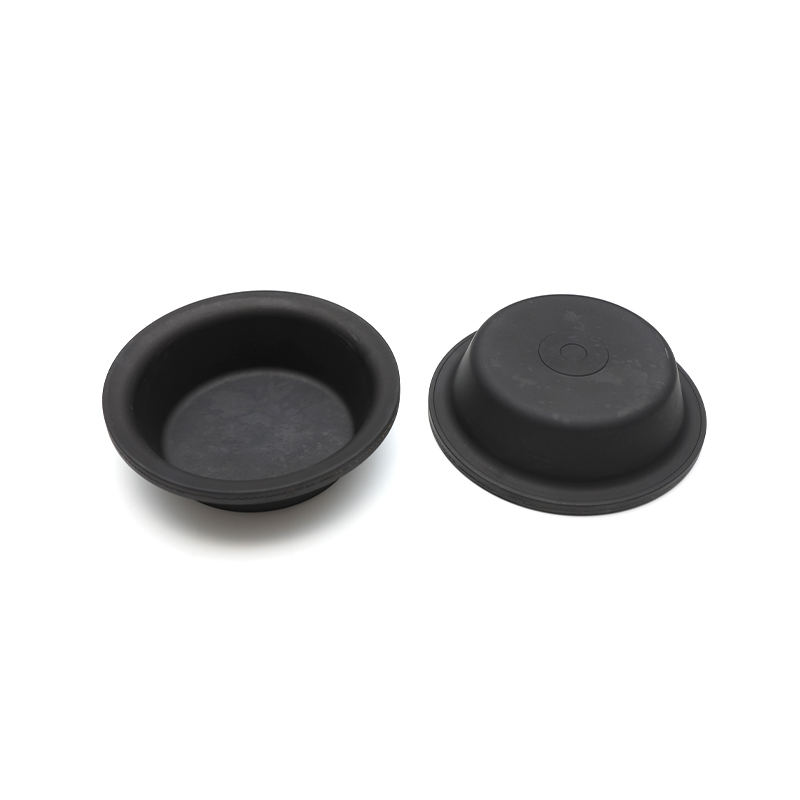Summary:Several factors can contribute to premature wear or failure of rubber brake diaphragms:
High Tempera...
Several factors can contribute to premature wear or failure of rubber brake diaphragms:
High Temperatures: Rubber brake diaphragms are subjected to elevated temperatures during normal braking operations, especially in demanding driving conditions or in vehicles frequently used for towing or heavy hauling. Prolonged exposure to high temperatures can accelerate the breakdown of rubber compounds, leading to thermal degradation. This process compromises the structural integrity of the diaphragm, resulting in increased susceptibility to cracking, brittleness, and ultimately failure. Moreover, thermal cycling—repeated heating and cooling—can exacerbate the degradation process, further diminishing the diaphragm's lifespan.
Chemical Exposure: Brake systems utilize hydraulic fluids, such as brake fluid, which are essential for transmitting pressure and ensuring proper braking function. However, exposure to brake fluid, as well as other chemicals commonly found in automotive environments, can have deleterious effects on rubber materials. Brake fluid, for instance, contains additives and compounds that can react with the rubber, causing swelling, softening, or deterioration of the diaphragm. Additionally, exposure to oils, grease, solvents, and environmental contaminants can accelerate chemical breakdown, leading to premature wear and failure of the rubber.
Abrasion: Within the confines of the brake system, abrasive particles, debris, or contaminants can infiltrate and come into contact with the rubber surface of brake diaphragms. During braking events, these particles can act as abrasives, generating frictional forces that gradually wear down the rubber material. Over time, this abrasive wear can compromise the structural integrity of the diaphragm, leading to thinning, cracking, or punctures. Abrasion is particularly problematic in environments where dust, dirt, or road debris are prevalent, as they exacerbate wear on the rubber surface.
Mechanical Stress: Rubber brake diaphragms are designed to withstand the mechanical forces exerted during braking, including pressure from hydraulic or pneumatic systems. However, improper installation, adjustment, or maintenance can introduce excessive mechanical stress or strain on the diaphragm. Overextension of the diaphragm beyond its designed limits can induce stretching, distortion, or deformation of the rubber material. This strain weakens the molecular structure of the rubber, making it more susceptible to tearing, cracking, or premature failure, particularly at stress concentration points.
Poor Installation: The correct installation of brake diaphragms is crucial for ensuring optimal performance and longevity of the braking system. Improper installation practices, such as incorrect alignment, uneven tightening of fasteners, or inadequate sealing, can compromise the integrity of the diaphragm. Misalignment may cause uneven pressure distribution across the diaphragm, leading to localized stress concentrations and accelerated wear. Moreover, inadequate sealing can result in fluid leaks, exposing the diaphragm to contaminants and contributing to premature degradation.
Age and Degradation: Rubber materials exhibit inherent susceptibility to aging and degradation over time, a process exacerbated by environmental factors such as sunlight, moisture, and oxygen exposure. As rubber ages, it undergoes physical and chemical changes, including polymer chain scission, oxidation, and cross-linking. These processes lead to the deterioration of mechanical properties, such as elasticity, tensile strength, and tear resistance. Consequently, aged rubber brake diaphragms become increasingly brittle, prone to cracking, and less capable of withstanding mechanical stresses, ultimately resulting in premature failure.
Automobile brake diaphragm-T20LS






.jpg?imageView2/2/format/jp2)


